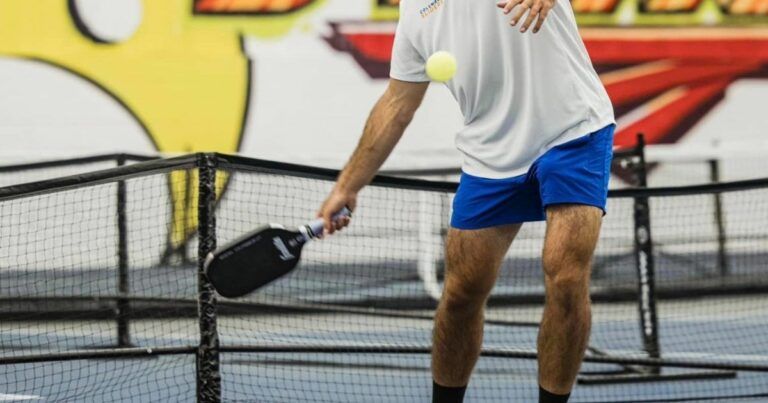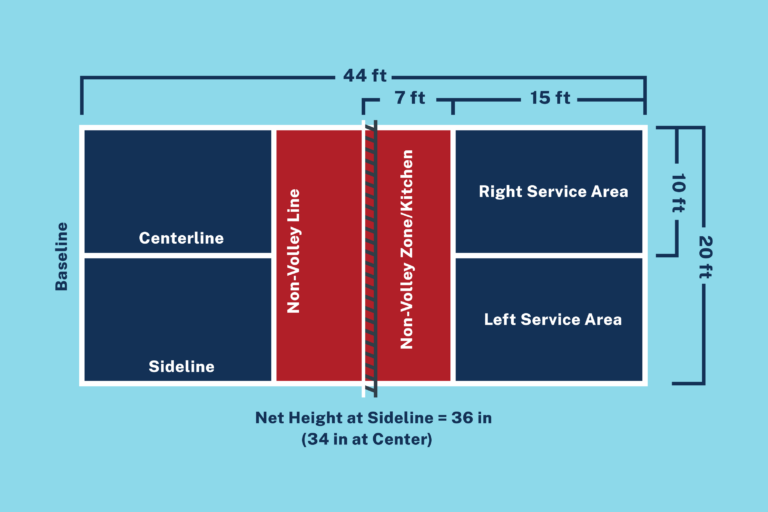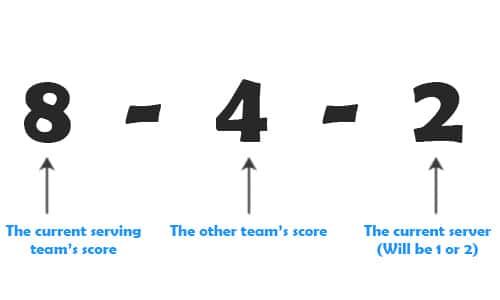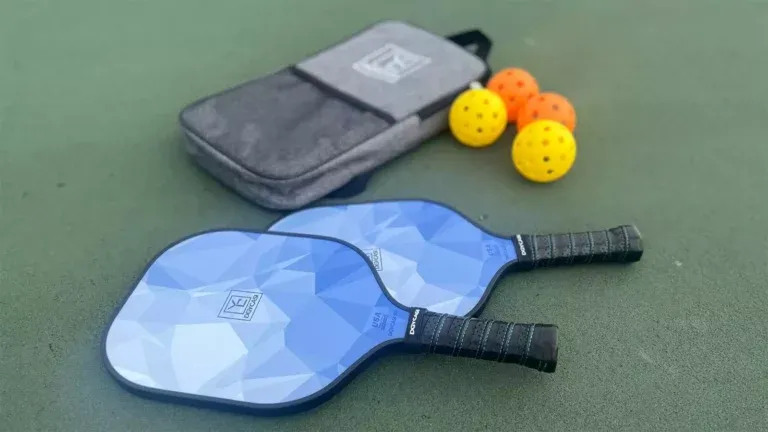Basic Pickleball Terms: Mastering the Fundamentals
Understanding the core elements of pickleball gameplay is crucial for both new players and experienced participants. Familiarizing yourself with these terms will significantly enhance your gameplay and enjoyment.

Serve - The serve is a critical aspect of gameplay, initiating each point. It must be executed underhand and directed diagonally into the opponent's service area. mastering the nuances of serving can provide a tactical advantage, as an effective serve can lead to easy points. Rules governing serves include the requirement for them to land in the designated service box without touching the net. Notably, if a serve touches the net but still lands in the proper area, it is deemed a "let" and is replayed.
Rally - Once the ball is in play, a rally occurs, characterized by a continuous exchange of hits between players until a point is scored or a fault is committed. The intensity of a rally can range from quick exchanges to prolonged back-and-forth action, often showcasing players' strategic decisions and tactical maneuvers.
Fault - A fault represents any violation of the game's rules, which results in the stoppage of play. Common faults include hitting the ball out of bounds, failing to clear the net, or committing a foot fault by stepping on or over the line while serving.
Point - Understanding how points are scored is fundamental to the game. Points are earned when the opposing player fails to return the ball correctly, essentially punishing them for mistakes. Mastering offensive and defensive strategies will significantly contribute to a player's point tally.
Side-Out - The term "side-out" refers to the moment the serving team's turn ends, and the serve shifts to the opposing team. This transition emphasizes the strategic importance of every serve and point, as maintaining control of the serve is often linked to winning games.
Match - A match consists of a series of games, typically played to 11, 15, or 21 points, depending on the specific tournament regulations. Winning the match requires accumulating enough game victories, making it essential for players to remain focused and adaptable throughout varying game scenarios.
Arming yourself with these basic gameplay terms lays a solid foundation for your pickleball journey, allowing you to navigate the game's dynamics with confidence.
Essential Shot Terminology: From Dink to Drive
A thorough understanding of shot terminology is vital for strategic success in pickleball. Each shot plays a unique role and can dictate the flow of the game.

Dink - The dink shot is a crucial maneuver in pickleball, characterized by a soft, precise stroke intended to land within the non-volley zone. This shot is particularly effective at neutralizing aggressive opponents, as it forces them to position themselves carefully while waiting for the ball to bounce. Mastery of the dink can create opportunities for strategic advantage, allowing players to maintain control of the court.
Drive - In contrast to the dink, the drive shot is powerful and aggressive. Executed with a strong swing, the drive aims to send the ball deep into the opponent's court, ideally making it hard for them to respond effectively. Successful execution of a drive not only adds aggression to your gameplay but can also lead to critical points.
Volley - This term refers to hitting the ball before it bounces on the court, a skill that must be executed with care, especially within the non-volley zone. Volleying allows players to capitalize on their opponent's weaknesses, yet it is prohibited in the kitchen area, highlighting the strategic nature of positioning and timing in gameplay.
Drop Shot - The drop shot is akin to the dink, aiming for precision. This gently lofted shot should land close to the net, creating difficulty for opponents in their return. Particularly effective when played against an opponent who is positioned back from the net, the drop shot can catch them off-guard, leading to easy points.
Lob - A lob is a high shot aimed to push an opponent back from the net, allowing the player to regain their positioning on the court. It requires finesse and timing, as a well-executed lob can thwart an opponent’s aggressive advances and create a fresh playing dynamic.
Smash - The smash is the offensive player's power shot, executed overhand with decisive force. This aggressive shot aims to overpower the opponent and is often used as a counter to weak returns. Perfecting the smash requires practice and precision but can be incredibly rewarding, especially when executed in a high-pressure situation.
Groundstroke - This term refers to a shot made after the ball bounces, typically from the baseline. It’s a fundamental shot that allows players to engage in rallies and develop rhythm within their game.
Backhand & Forehand - These are two fundamental paddle strokes. The forehand is executed on the dominant side of a player's body and generally produces topspin, while the backhand is performed on the non-dominant side. Understanding when to use each stroke can determine a player's effectiveness during rallies and overall enjoyment of the game.
By familiarizing yourself with various shot terminologies, you equip yourself with the language of pickleball, enhancing your ability to strategize and communicate during play.
Decoding the Court: Key Area Terminology
Understanding the layout of the pickleball court and various zones is paramount for effective gameplay and strategy development.

Non-Volley Zone (Kitchen) - This area, commonly referred to as the kitchen, is a critical zone that extends 7 feet from the net. Players cannot volley within this zone, compelling them to let the ball bounce before returning it. This rule fosters strategic plays and requires players to be precise in both offensive and defensive movements.
Baseline - Located at the back of the court, the baseline marks one of the key boundaries. Players often rely on this line to position themselves effectively during gameplay. It serves as a reference point for both serves and rallies.
Centerline - The centerline divides the court lengthwise into service areas. Understanding where this line is located is essential for executing proper serves and ensuring that plays remain within the designated areas.
Sideline - The sidelines mark the lateral boundaries of the court and are instrumental for determining out-of-bounds shots. Knowing the dimensions of the court helps players avoid faults during intense play.
Service Court - The service court is the area where players must direct their serves. Mastery of the service court's dimensions is crucial for consistent and effective serving.
Backcourt - Situated near the baseline, the backcourt is where players often find themselves during rallies. Strategically positioning oneself in the backcourt allows for better shot options when responding to various serves.
Midcourt (Transition Zone) - The midcourt area lies between the non-volley zone and the baseline, engaging players in transitions between defensive and offensive positions. Understanding how to navigate this zone can enhance a player’s tactical approach to various scenarios, making it an essential part of court strategy.
Having a comprehensive understanding of court areas encourages better decision-making during gameplay, paving the way for tactical maneuvering and improved player performance.
Scoring Like a Pro: Understanding Points and Rules
Mastering the nuances of scoring rules can provide a significant tactical edge in pickleball. Knowing how points are accumulated and the specific rules attached to scoring is vital for success.

Ace - An ace is a serve that an opponent fails to return, automatically awarding a point to the server. Crafting effective serves that lead to aces can be an exciting way to earn points and establish dominance in play.
Game Point - This denotes the point that allows a player to claim victory in a single game. Scoring a game point often requires both strategic execution of shots and maintaining poise under pressure, making it a key moment in any match.
Match Point - When the score nears the final moments of a match, the match point signifies the opportunity for a player to win the entire contest. The tension surrounding match points can influence players' strategies, focusing their energy and attention on the critical plays required for victory.
Side-Out Scoring - In this system, points are only scored when the serving team is in play. Grasping this concept allows players to understand the flow of the game better and approach each serve with a competitive mindset.
Two-Bounce Rule - Before players are allowed to volley, the two-bounce rule mandates that the ball must be allowed to bounce once on each side after serves. This rule emphasizes the importance of patience and strategic maneuvering at the beginning of each rally.
A thorough understanding of these scoring rules and terms empowers players to navigate the game with greater insight and strategic clarity, ultimately enhancing performance on the court.
Equipment Lingo: Paddles, Balls, and More
An understanding of equipment-related terminology is essential for every pickleball player. Knowing the gear you use and how it impacts your gameplay can significantly improve your performance

Paddle - The paddle is the primary piece of equipment used to strike the ball. Various types of paddles are available, constructed from different materials that influence performance. Choosing the right paddle based on playstyle can enhance various aspects of a player’s game.
Grip - The grip refers to how a player holds the paddle, greatly impacting control and accuracy. Finding a comfortable grip is key to executing shots effectively.
Overgrip - An overgrip is an additional layer applied over the original grip, often used to enhance comfort and control. Many players opt to personalize their paddles with overgrips to accommodate their unique preferences.
Paddle Materials - Paddles can be made from materials such as composite or graphite, affecting their weight and durability. Players should consider these factors when selecting equipment based on their playing style and preferences.
Handle - The handle is the part of the paddle players grip. It’s crucial for comfort and performance, allowing players to maintain control during various maneuvers and shots.
A well-rounded understanding of equipment terminology ensures players are informed when selecting gear, leading to enhanced performance on the court.
Strategic Terms: Mastering the Art of the Game
In pickleball, effective strategies often dictate the outcome of matches. By familiarizing oneself with strategic terminologies, players can refine their approach and enhance their chances of success.
Stacking - In a doubles game, stacking involves aligning players on one side of the court to optimize court coverage. This strategy can create advantageous dynamics, especially against opponents with specific strengths.
Poaching - Poaching refers to the act of crossing over to successfully hit a partner's shot. This tactic requires good communication and situational awareness, allowing players to capitalize on opportunities effectively.
Third Shot Drop - This vital strategy involves dropping the third shot into the kitchen, making it hard for opponents to attack. Using this technique effectively can pivot the momentum of a game in the player’s favor.
Shake & Bake - Also known as "crush & rush," this aggressive doubles strategy involves a coordinated attack by both players. The shake-and-bake allows for exciting and improvised play, effectively overwhelming opponents.
I-Formation - The I-formation strategy places both players on the same side of the court. This tactic can confuse opponents regarding shot expectations and create unexpected opportunities for scoring.
Passing Shot - This term refers to a shot designed to pass an opponent on the court, ideally landing in a location that's difficult to return. Mastering the passing shot enhances a player’s versatility in rallies.
The incorporation of these strategic terms into your game can revolutionize your approach, allowing for more tactical plays and a deeper understanding of the game’s flow.
Pickleball Slang: Talking the Talk
Every sport has its unique slang that can often make conversations lively and engaging. Pickleball is no exception, with a variety of informal terms that aptly capture the vibrancy of the game.
Getting Pickled - This term denotes losing a game without scoring a single point, a situation all players strive to avoid. The emotional weight of being pickled can motivate players to refine their game.
Golden Pickle - A "golden pickle" describes a flawless victory, where one player shuts out the other without allowing a score. Achieving this feat is often a point of pride that showcases a player’s skill and strategic dominance.
Body Bag (Tag) - This phrase refers to hitting an opponent directly with the ball. While it highlights a competitive edge, it also maintains a sense of humor about the game.
Nasty Nelson - This term refers to an instance when a serve intentionally strikes the non-receiving player, aiming for surprise and tactical advantage.
Attackable Ball - An attackable ball is one that presents an opportunity for players to strike back aggressively. Recognizing these moments can enhance performance and capitalize on opponent mistakes.
To embrace the full spirit of pickleball, understanding slang allows players to join conversations and engage fully with the community surrounding the sport.
Rules and Regulations: Avoiding Faults
Knowing the rules and regulations governing play is key to avoiding penalties during gameplay. Being well-informed can significantly improve your performance.
Fault - Any violation of the game's rules results in a fault, leading to a halt in play. Common sources of faults include out-of-bound shots, illegal serves, and breaches of the two-bounce rule.
Double Bounce Rule - This significant rule stipulates that the ball must bounce once on each side before players can volley it. Understanding this mechanic promotes more strategic play by emphasizing patience during exchanges.
Non-Volley Zone Rules - Within the kitchen, players are prohibited from executing volleys. This rule keeps gameplay strategic and encourages players to engage in tactical exchanges rather than rapid-fire volleys.
Foot Fault - A foot fault occurs when a player steps on or over the baseline during their serve or steps into the kitchen while attempting to volley. Awareness of foot faults is essential for maintaining proper serving techniques and avoiding penalties.
By adhering to these rules and understanding how they impact gameplay, pickleball players can enhance their understanding of the game, preventing costly mistakes during matches.
Player Positioning: Where to Stand on the Court
Effective player positioning can determine both offensive and defensive success. Knowledge of the court layout and strategic positioning is crucial for optimal performance.
Transition Zone - This area, located between the baseline and the non-volley line, is where players often find themselves transitioning from defensive to offensive positions. Navigating this zone effectively allows for improved strategic options.
Ready Position - The ready position refers to an ideal stance that players adopt to receive the ball effectively. This stance requires balance and readiness, facilitating quick reactions to the opponent's shots.
Approaching the Net - Moving strategically toward the non-volley zone allows players to exert pressure on their opponents. Understanding when to approach can significantly impact a match's outcome, often leading to advantageous opportunities.
With precise positioning and effective movement, players can enhance their court coverage and response times, translating into better overall performance.
Tournament and League Lingo: From APP to MLP
Familiarity with tournament-related terminology unveils the structures and organizations that shape competitive pickleball, allowing players to navigate the sport’s landscape effectively.
APP (Association of Pickleball Players) - This organization strives to promote pickleball through professional and amateur tournament series, providing players with valuable opportunities to showcase their skills.
PPA (Professional Pickleball Association) - The PPA represents one of the leading professional tours, organizing tournaments where elite players compete. Awareness of the PPA offers insight into pathways for advanced players seeking professional status.
MLP (Major League Pickleball) - MLP is a professional league that features teams competing in a structured format. This league has garnered attention for enhancing the competitiveness and visibility of pickleball.
DUPR (Dynamic Universal Pickleball Rating) - This rating system evaluates and ranks players based on their performance in various matches. Familiarizing oneself with ratings helps players understand their placement and progress within the sport.
Ranking & Seeding - This terminology encompasses players' positions within tournaments, which can influence match pairings and overall competition dynamics.
Pool Play - A popular tournament format where players are grouped into pools based on their rankings. Players compete within these pools to determine advancement to subsequent rounds.
Championship Point - The term for the point that offers a decisive victory in any tournament context. Familiarity with championship points allows players to harness the pressure associated with high-stakes moments.
Understanding tournament terminology not only helps players navigate the competitive atmosphere but also enhances their appreciation for the structure surrounding the sport.
Behind the Terms: Exploring the Stories
The language of pickleball nuggets often reveals fascinating histories and stories behind its terminology. Exploring these histories enriches the experience of the game.
The Etymology of "Pickleball" - The origins of the name "pickleball" are debated among enthusiasts. Some attributethe name to a family pet, while others view it as a reference to a mixed bag of sports. Regardless, the evolving story surrounding this name contributes to the sport's quirky identity.
The Story Behind the "Erne" - Named after Erne Perry, this maneuver involves a player executing a shot near the net while leaping from outside the court. Known as a daring technique, it has become a key term for discussions about advanced play.
Who Was Nasty Nelson? - Nasty Nelson is a figure related to the infamous serve technique that involves the strategic strike against an opponent during play. The stories and legends associated with his name add depth to the sport’s history.
Regional Variations in Terminology - Different areas may use unique terms or phrases related to the game, showcasing the cultural richness of pickleball across communities.
By exploring the historical significance of pickleball terminology, players gain a deeper connection to the sport and an appreciation for its quirky attributes.
Conclusion
Grasping the unique vocabulary and terminology of pickleball is essential for effectively navigating the game, whether on a casual or competitive level. From basic gameplay terms like serve and rally to nuanced strategies like stacking and third shot drop, this guide equips players with the knowledge they need to enhance their understanding and enjoyment of the sport. Familiarity with the court layout, key areas, and shot variations enables improved decision-making during gameplay while uncovering entertaining slang and behind-the-scenes stories deepens your connection to the pickleball community. As you hit the court armed with this understanding, you will find not just success but also a greater appreciation for the exciting world of pickleball.










